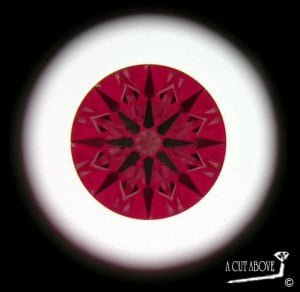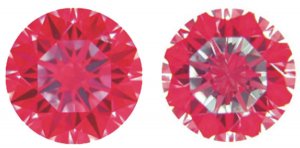From what I have read, an ideal cut diamond will have small v-shaped white leakage at the girdle. However, would an idealscope image like this one be preferred? What is the difference really? Less like leakage, less scintillation?
I''m very very curious... and also looking to buy this stone.
On the surface, this would seem more ideal as there is less leakage... but am I missing something?
Thanks!

I''m very very curious... and also looking to buy this stone.
On the surface, this would seem more ideal as there is less leakage... but am I missing something?
Thanks!











300x240.png)